NRAO eNews
Volume 5, Issue 10
October 17, 2012
NRAO eNews
Volume 5, Issue 10 • October 17, 2012
NSF Portfolio Review Impacts
The Portfolio Review Committee Report recommends NSF divest from the NRAO Green Bank Telescope and Very Long Baseline Array by 2017.
You can join the community discussion at the online AUI forum.
If implemented by NSF, these recommendations will have major impacts on the astronomy community, as described in the following responses to the Report:
Upcoming Events
![]() Molecular Spectroscopy in the Era of Far-IR Astronomy
Molecular Spectroscopy in the Era of Far-IR Astronomy
Oct 28-31, 2012 | Atlanta, GA
![]() The First Year of ALMA Science
The First Year of ALMA Science
Dec 12-15, 2012 | Puerto Varas, Chile
![]() ALMA Special Session
ALMA Special Session
Jan 8, 2013 | Long Beach, CA
![]() NRAO Town Hall
NRAO Town Hall
Jan 8, 2013 | Long Beach, CA
![]() Transformational Science with ALMA: From Dust to Rocks to Planets
Transformational Science with ALMA: From Dust to Rocks to Planets
Apr 8-12, 2013 | Kona, Hawaii
Planned NRAO Response to the G2 Encounter with SgrA*
An exciting opportunity to probe accretion physics in the vicinity of SgrA* has been pointed out by Gillessen et al. (2012a, b). A dense gas cloud of ~3 Earth masses in a highly eccentric orbit has an expected pericenter passage in mid-2013. The cloud, designated G2, will achieve a minimum distance from the massive black hole of just 2200 Schwarzschild radii. Additional information is available at the Gas Cloud wiki hosted by Stefan Gillessen (https://wiki.mpe.mpg.de/gascloud). Those interested in contributing to the wiki, please contact Stefan Gillessen.
At the NRAO's request an ad hoc committee was convened to discuss the optimal response of NRAO to the impact of the G2 cloud with the Sgr A* accretion region. Using the Recommendations for the Optimal NRAO Response to the G2 Encounter with Sagittarius A* report (Bower et al. 2012) as guidance, NRAO has developed an observing strategy for the VLA and VLBA. The goal is to provide baseline continuum measurements with both the VLA and VLBA ahead of the encounter, and VLA monitoring to extend through the end of A-configuration in Apr 2014. These data will be non-proprietary, and will be made available to the community (along with derived data products) in a timely fashion. It is expected that the community will use these baseline monitoring data to trigger follow-up observations. Proposals for triggered follow-up are expected to go through the regular time allocation route (submitted at the normal 1 Feb/1 Aug proposal deadlines), because scheduling contraints typically prevent Director's Discretionary Time proposals at Galactic Center LSTs on both the VLA and VLBA.
Very Long Baseline Array
The VLBA will observe a single, pre-encounter, baseline measurement of the SgrA* region at 22 and 43 GHz. The observations will use 2 Gbps data rate, for a full track, to perform angular size measurements and astrometry of SgrA*, towards the beginning of semester 2013A. NRAO will consider triggered VLBA observations close to the encounter, depending on the status of approved, peer-reviewed, proposals to do similar observations. NRAO will give priority to proposals approved through the normal proposal process for VLBA follow-up.
Very Large Array
The VLA will cover all 8 receiver bands – 1.5, 3.0, 5.5, 9.0, 14.0, 21.2, 32, and 41 GHz – in 2-hr scheduling blocks using standard 8-bit NRAO default continuum set-ups, without polarization calibration. The initial cadence will be every two months starting in Oct 2012 (A-configuration), increasing to monthly closer to the transit.
Proposed observation dates are listed below, but are subject to change and may depend on weather or other scheduling constraints.
| Date | Configuration |
| 14 Oct 2012 | (A-config) |
| 16 Dec 2012 | (A-config) |
| 10 Feb 2013 | (D-config) |
| 7 Apr 2013 | (D-config) |
| 2 Jun 2013 | (C-config) |
| 6 Jul 2013 | (C-config) |
| 10 Aug 2013 | (C-config) |
| 10 Sep 2013 | (CnB to B config move: predicted closest approach) |
| 12 Oct 2013 | (B-config) |
| 16 Nov 2013 | (B-config) |
| 21 Dec 2013 | (BnA-config) |
| 22 Feb 2014 | (A-config) |
| 26 Apr 2014 | (A-config) |
Triggered VLA follow-up will be through peer-reviewed, regular proposals submitted at the 1 Feb 2013 and the 1 Aug 2013, proposal deadlines.
References
Gillessen, S., Genzel, R., Fritz, T. K., et al. 2012a, Nature, 481, 51 (arXiv: 1112.3264)
Gillessen, S., Genzel, R., Fritz, T. K., et al. 2012b, Astrophysical Journal (submitted; arXiv:1209.2272)
Community Day
Gustaaf Van Moorsel
NRAO New Mexico is pleased to receive applications from universities and other institutes in North America to host a Community Day, during which NRAO staff will present Very Large Array (VLA) observing from proposal to data reduction. The main goal is to introduce the vastly enhanced capabilities of the new VLA to those with some background in radio interferometry ahead of the Feb 2013 proposal deadline. We therefore anticipate the first series of these community days to take place during the remainder of 2012 and Jan 2013. Through hands-on tutorials we will cover the basics of proposing, scheduling block preparation, data retrieval, and CASA data reduction. If there is enough interest we will cover some aspects of Very Long Baseline Array (VLBA) observing as well.
There will be no cost to your institute; all we ask you to provide is:
(a) a minimum of 12 participants, each of which is expected to bring a modern laptop capable of running CASA (details to follow). To reach this minimum you could consider inviting colleagues from other institutes in your area. We strongly recommend each participant register at my.nrao.edu ahead of time.
(b) a sufficiently large meeting room with typical modern audiovisual capabilities (projector) and Wi-Fi.
To apply, and for any further information, please contact Emmanuel Momjian (emomjian at nrao.edu).
ALMA Status
Al Wootten
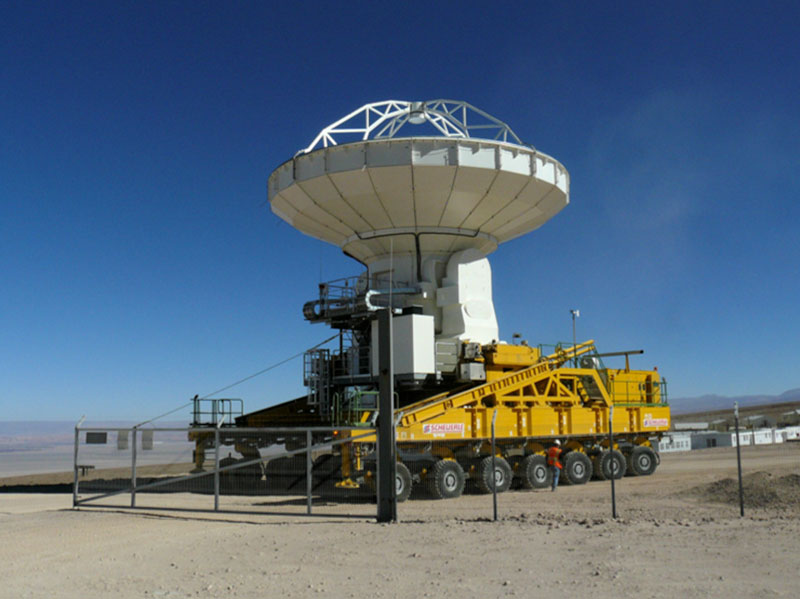
Figure 1. The 24th North American antenna leaves the antenna erection compound at the ALMA site in northern Chile to be outfitted with ALMA electronics.
 Zoom
Zoom
The final North American (NA) antenna, number 25, is scheduled for its acceptance review at the end of October. The first of the series of twenty-five antennas was accepted 6 February 2009. Congratulations to the Antenna Integrated Product Team for the (projected) successful delivery of their NA antennas. The antennas were designed and built by the Vertex division of General Dynamics Corp. under contract with Associated Universities, Inc.
At the beginning of October, 43 antennas are stationed at the 16,000-foot elevation ALMA Array Operations Site (AOS). Thirty-two of these antennas are available for the 12m array and 11 antennas are available for the Atacama Compact Array (ACA). Elements of all 66 ALMA antennas are at the ALMA site in Chile. Forty-seven antennas have been accepted from the contractors by ALMA and have been outfitted with ALMA electronics at the Operations Support Facility (OSF). Two North American antennas (23 and 24) continue their hardware integration at the OSF, as do four European antennas (DA51-54).
The 32-station correlator was shut down on 3 Sep for reconfiguration to its final four quadrant 64-station configuration. Commissioning of the Atacama Compact Array (ACA) with nine 7m and two 12m antennas continued through the month. Commissioning and verification of the 64-station correlator began and by Oct had checked out for 32 stations as allowed by the interim configuration. Connection of the multi-fuel Permanent Power Supply (PPS) at the AOS has begun. This will enable use of antenna stations previously unoccupied, including many on the longer baselines that will be a feature of Cycle 1 Early Science. It is expected, however, that Cycle 1 will commence with the array in a compact configuration.
![Figure 2. The North American ALMA Front End Integration Center team [left to right, standing]: Wendy Harper, John Buchanan, Mike Shannon, Erik Gaines, K. Saini, John Effland, Jack Meadows, Morgan McLeod, Skip Thacker, Joyce Ford. [kneeling]: Matt Chick.](images/alma_feic.jpg)
Figure 2. The North American ALMA Front End Integration Center team [left to right, standing]: Wendy Harper, John Buchanan, Mike Shannon, Erik Gaines, K. Saini, John Effland, Jack Meadows, Morgan McLeod, Skip Thacker, Joyce Ford. [kneeling]: Matt Chick.
 Zoom
Zoom
The 22nd and final Front End component completed its preliminary acceptance in-house at the Front End Integration Center at the NRAO Technology Center (NTC). With the conclusion of Front End, Correlator and Local Oscillator components, the NTC team transitions its focus from production of construction deliverables to maintenance tasks. The near-term focus of the remaining team will be provisioning spare components that will allow the prompt repair of Line Replaceable Units (LRUs).
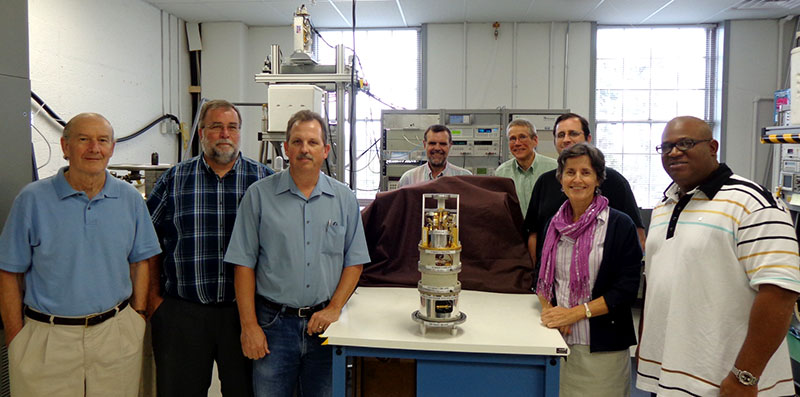
Figure 3. The ALMA Band 6 team [left to right]: Tony Kerr, Dave Schmitt, Ralph Groves, Neil Horner, John Effland, Matt Morgan, Francoise Johnson, Mike Reynolds.
 Zoom
Zoom
On 16 Aug, the Band 6 team at the North American ALMA Front End Integration Center in Charlottesville delivered the final Band 6 (211-275 GHz) cold cartridge to the project.
The first of the ALMA receiver bands built under the post-construction Development phase of ALMA operations will be Band 5 (163-211GHz). European partners are supplying the receiver cartridges for this band, and NRAO will supply the Local Oscillator components. A production coordination meeting between the LO group and the ESO partners was held 13 Sep.
The latest ALMA Pipeline software is being tested at the Santiago Central Office (SCO) before being deployed to the ALMA regional centers (ARCs). The NAASC and other ARCs have been testing a previously deployed pipeline release throughout the summer. The latest version has improved archive access and image production.
Session 23 Early Science Cycle 0 was cancelled owing to installation of the Permanent Power Supply, which requires shutting down power to sections of the array. Session 24 is scheduled to begin 17 Oct. To date, 70% of the available time has been used and 70% of the scheduling blocks (observing units of about an hour) for the Cycle 0 highest priority projects have had execution completed. The project is therefore on track to complete most highest priority projects by the end of Cycle 0, which ends with the close of the year. However, given the expected observing conditions, not all ALMA Band 9 executions or all LSTs are likely to be completed.
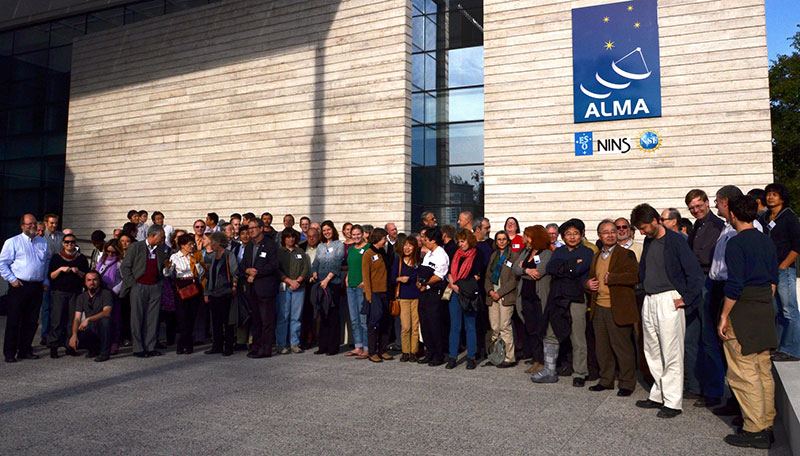
Figure 4. The ALMA Cycle 1 Proposal Review Panels at the Joint ALMA Observatory facility in Santiago, Chile.
 Zoom
Zoom
An update on ALMA Cycle 0 observing status was recently posted as a news item on the ALMA Science Portal.
As announced in the Cycle 1 proposal call, up to 800 hours of observing time will be allocated to the highest ranked proposals. The average proposal request was for 3.6 hours, which suggests that ~220 projects may be prepared for observing. Cycle 1 observations will be scheduled starting in Jan 2013. As announced in the call, there will be a 4-6 week shutdown beginning in Feb 2013 for the antiplanic winter, during which the project will focus on construction activities.
This Month @ the NAASC
Student Observing Support
Patterned after the existing and successful NRAO Student Observing Support (SOS) program, the North American ALMA Science Center (NAASC) anticipates providing funds to support a limited number of students enrolled at US universities and colleges who undertake research programs based on the highest priority ALMA proposals for each cycle. Awards will be made on a competitive basis, and will be limited to $35,000 USD total per student. Typical activities that may be covered include stipend, computing hardware, and expenses associated with attending a conference to present ALMA results.
Potential ALMA Cycle 1 investigators should submit an application for student funding support by 1 Nov 2012. Results of the review process will be announced by the start of the associated ALMA observing period. Last year, the NAASC funded 12 U.S. students from among the highly ranked NA proposals.
Detailed program information, including the ALMA Cycle 1 SOS application submission instructions and form, is available at the NRAO Student Observing Support program web page.
Surprising Spiral Structure Spotted by ALMA
Al Wooten
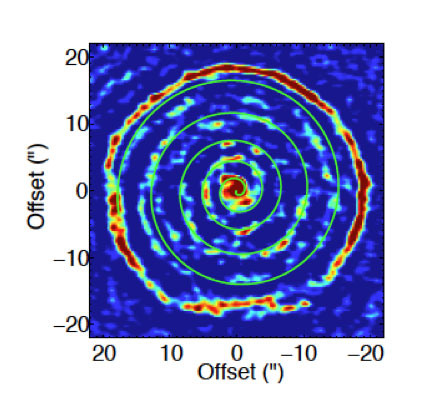
Figure 1. The stellar vLSR image. The color scale gives the flux in Jansky per beam. See the Nature paper for additional details.
 Zoom
Zoom
ALMA has made high resolution, high sensitivity observations of the CO emission around the asymptotic giant branch (AGB) star R Sculptoris (R Scl). The presence of a detached shell of emission from dust and from the CO molecule at a radius of about 20" around the star has been known for many years. The shell results from a thermal pulse that briefly increased the stellar mass loss. The physical parameters of the pulse, common in AGB star evolution, have been difficult to constrain, though they are critical to our understanding of the lifetime of this phase of stellar evolution and of the degree to which processed material enriches the interstellar medium.
The ALMA images reveal the shell to contain a previously unknown spiral structure, though such structure has been associated with binary stars in other systems. The ALMA observations coupled with hydrodynamical models show R Scl to be a binary which underwent a thermal pulse ~1800 years ago and which lasted about 200 years. The mass loss increased thirty-fold during this episode. The measurements indicate that about three times more mass is returned to the interstellar medium during the pulse than previously thought. Stars such as R Scl are major contributors to the galaxy's reservoir of raw materials critical for the creation of new stars, planets and for life.
This research was reported by M. Maercker (ESO, Univ Bonn) et al. in a paper titled Unexpectedly large mass loss during the thermal pulse cycle of the red giant R Sculptoris that appeared in the 11 October 2012 issue of Nature.
The First Year of ALMA Science: The High Redshift Universe
Aaron Evans
The Atacama Large Millimeter/submillimeter Array (ALMA) began Early Science observations 30 Sep 2011. A number of the accepted Cycle 0 proposals make use of the superior sensitivity and spatial resolution of ALMA to study the submillimeter properties of starburst galaxies in the early Universe. These galaxies likely have infrared luminosities in excess of 1012 Lsun, and are the dominant contributors in the infrared luminosity density at redshifts greater than 2.
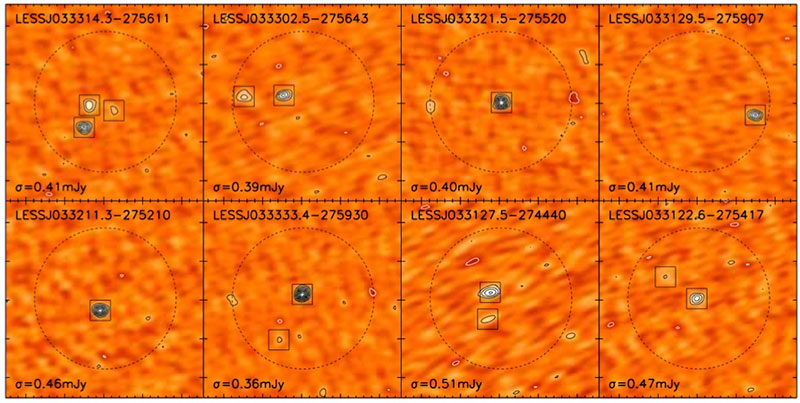
 Zoom
Zoom
Early Science data have started to appear in the literature, with investigators of high-redshift galaxy programs making use of ALMA to achieve three primary science goals. The first goal is the identification of high-redshift starburst galaxies via ALMA continuum observations. Most “submillimeter” galaxies identified to date were discovered in wide field bolometer array surveys with single-dish telescopes such as the James Clerk Maxwell 15m Telescope (JCMT) on Mauna Kea, Hawaii and the IRAM 30m Telescope on Pico Veleta, Spain. By ALMA standards, these bolometer array observations produce extremely low-resolution (>7”) data, making it difficult to determine which of the multiple optical or near-infrared galaxies within the FWHP beam are the counterparts to the submillimeter emission. ALMA follow-up provides the best opportunity to pinpoint the position of the submillimeter source. The image above shows an example of this, in which Karim et al. (2012, MNRAS, in press: http://arxiv.org/abs/1210.0249) make use of the order of magnitude improvement in angular resolution with ALMA (1.5” versus 19”) to resolve the regions into a small number of submillimeter bright galaxies. It is worth noting that an optical/near-infrared counterpart is not always observed, and thus our knowledge of this subset of galaxies will be completely derived from continuum and emission line observations with ALMA.
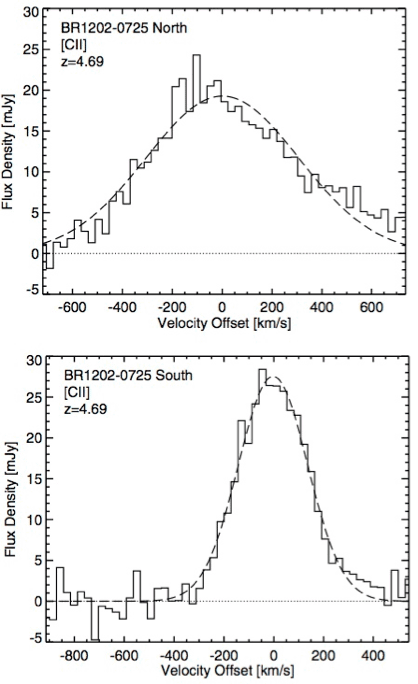
The second goal of Early Science high-redshift observations is the derivation of the infrared luminosity of high-redshift galaxies. Wang et al. (2012: http://arxiv.org/abs/1210.0242) make use of ALMA to observe a sample of redshift 6 quasar host galaxies optically identified in the Sloan Digital Sky Survey and the Canada-France High Redshift Quasar Survey. At such high lookback times, the Universe was less than a Gyr old. From 250 GHz continuum observations of the sample, Wang et al. derive far-infrared luminosities for the quasar hosts of 1012-13 Lsun and, under the assumption that the starburst powers half of the far-infrared luminosity, corresponding star formation rates of 600-2000 Msun per year. By comparison, the extreme starburst galaxy Arp 220 has a star formation rate of 50 Msun under the same assumptions.
The third primary science goal for high-redshift programs is to study the star formation and galaxies dynamics through the analysis of molecular and atomic line emission. An example is given in the spectrum above: Wagg et al. (2012, ApJL, 752, 30: http://adsabs.harvard.edu/abs/2012ApJ...752L..30W) detect [C II] 158 micron emission from the z = 4.69 quasar BR 1202-0725 and its companion submillimeter galaxy. The [C II] emission line is a major cooling line in molecular clouds and is produced in the PDR and neutral regions of galaxies. Further, it is typically 1000 times brighter than CO, with a line luminosity 0.1 - 1.0 % of the far-infrared luminosities of galaxies. The brightness of [C II] makes it ideal for tracing the kinematics of galaxies (see Wang et al. 2012) and for identifying possible outflows. Wagg et al. conclude that the [C II] / far-infrared luminosity ratio they derive for both the quasar host (southern source) and the submillimeter galaxy (northern source) is consistent with prior high-redshift studies which show a high ratio for starburst galaxies than quasar host galaxies. Wang et al. (2012) also detect [C II] emission from their high-redshift quasar hosts with ALMA and estimate similar [C II] / far-infrared luminosity ratios as Wagg et al.. These and complementary results were recently presented at the NRAO conference The Interstellar Medium in High Redshift Galaxies Comes of Age which was held in Charlottesville on 13-15 Sep 2012 in honor of the career of Paul Vanden Bout.
The First Year of ALMA Science Workshop
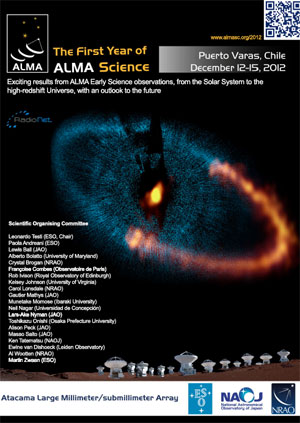
The First Year of ALMA Science Workshop will take place in Puerto Varas, Chile, 12-15 Dec 2012.
ALMA Early Science operations began 30 Sep 2011. Over one hundred high science profile projects have been identified as high priority for execution. The first exciting scientific results from Science Verification datasets and Cycle 0 observations are coming out in refereed journals since the beginning of 2012. At the end of the year, the ALMA users community will be in a position to review the first science results produced by this new and unique facility. The conference will cover all the ALMA Science topics covered by Early Science observations, from observations of the Solar System bodies to objects in our own Galaxy, the local to high redshift Universe. While the conference will be focused on ALMA observational results, we plan to include presentations and discussions on related theoretical implications and predictions as well as relevant complementary data from other major facilities. The conference will also be an ideal venue to discuss the scientific priorities for the ALMA development plan upgrades in the context of the first results from Early Science.
Conference website: http://www.almasc.org/2012
Conference email: asc2012@almanospam.example.cl
Molecular Spectroscopy in the Era of Far-IR Astronomy Workshop
28-31 Oct 2012, Emory University, Atlanta, Georgia
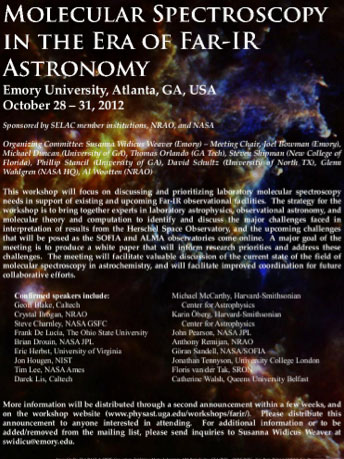
This workshop will focus on discussing and prioritizing laboratory molecular spectroscopy needs in support of existing and upcoming Far-IR observational facilities. The strategy for the workshop is to bring together experts in laboratory astrophysics, observational astronomy, and molecular theory and computation to identify and discuss the major challenges faced in interpretation of results from the Herschel Space Observatory, and the upcoming challenges that will be posed as the SOFIA and ALMA observatories come online. A major goal of the meeting is to produce a white paper that will inform research priorities and address these challenges. The meeting will facilitate valuable discussion of the current state of the field of molecular spectroscopy in astrochemistry, and will facilitate improved coordination for future collaborative efforts.
Confirmed invited speakers: Lou Allamandola (NASA Ames), Geoff Blake (Caltech), Crystal Brogan (NRAO), Steven Charnley (NASA Goddard), Frank C. De Lucia (Ohio State), Brian Drouin (NASA JPL), Maryvonne Gerin (Paris Observatory), Eric Herbst (Virginia), Jon T. Hougen (NIST), Timothy Lee (NASA Ames), Darek C. Lis (Caltech), Michael C. McCarty (CfA), David Nesbitt (Colorado), Karin Oberg (CfA), John Pearson (NASA JPL), David Plusquellic (NIST), Anthony Remijan (NRAO), Goran Sandell (NASA/SOFIA) Jonathan Tennyson (University College London), Floris van der Tak (SRON), Catherine Walsh (Queen's University), Susanna Widicus Weaver (Emory).
Conference website: http://www.physast.uga.edu/workshops/farir/home
2013 Rocks Abstract Submission Announcement

The North American ALMA Science Center (NAASC), in cooperation with the Academia Sinica Institute of Astronomy and Astrophysics (ASIAA) in Taiwan, is pleased to announce the 7th NAASC workshop titled: Transformational Science with ALMA: From Dust to Rocks to Planets - Formation and Evolution of Planetary Systems. This NAASC-ASIAA "2013 Rocks!" workshop will be held 8-12 April 2013 on the Big Island of Hawaii.
Registration is now open.
2013 Rocks! is accepting abstracts at https://science.nrao.edu/php/alma/rocks_abs.php. The deadline for submitting abstracts is 15 Nov.
Make sure you visit the meeting website at http://www.cv.nrao.edu/rocks/ for all relevant meeting information including links to the preregistration and abstract submission.
Also, remember to like us on Facebook to get the most recent updates and announcements posted by the meeting organizers and your colleagues.
2013 Rocks! is committed to broadening participation by women and under-represented minorities.
GBT Data in the NRAO Science Archive
Dana Balser, Gareth Hunt, and Brian Kent
We are pleased to announce that Green Bank Telescope (GBT) data are now available via the NRAO Archive Access Tool (AAT). Thus, data from the GBT, Very Large Array (VLA), and Very Long Baseline Array (VLBA) are available with a single search and retrieval mechanism to the astronomical community.
GBT data can be retrieved as either raw FITS files or as an SDFITS file. The archive includes data from 2003 until the present. Exceptions include pulsar data, where the data volumes tend to be large, or data where private (PI) detectors have been used. Unlike the VLA, GBT data will not be immediately accessible via the AAT, but they should be available within 48 hours of the observations. Feedback or problems should be addressed to the NRAO Helpdesk. Because GBT users are responsible for observing, they can still directly access data for their projects by using Green Bank accounts in the traditional way.
The archive will be improved during FY 2013. GBT meta-data are sometimes incomplete (e.g., missing frequency information for older spectroscopy data) or non-existent (e.g., pulsar data before 2011). We plan to generate these meta-data from the raw data. We also plan to include some pulsar data in the archive where the data volume is manageable (e.g., pulsar timing data). Changes to the AAT interface are also proposed, such as including more telescope specific parameters to better refine queries.
This was a collaborative effort of the NRAO Green Bank, Charlottesville, and Socorro staff under the auspices of Observatory Science Operations. As planned, the new capability was released for use 1 Oct.
GBT Observing Alert: Computer and Software Changes
Toney Minter and Mark Whitehead
On Wednesday, 10 October 2012 a new version of the GBT Monitor and Control (M&C) software was released. The new M&C software requires the use of Redhat 6 for all observations. Although we hope the impact is minimal, it is possible that observers will have to make some adjustments to their desktop and computing environments before they are able to launch the software used for observing. We would like to encourage all observers to log in well before their observing begins to make sure that GBT observing time is not lost due to any changes needed for desktop and computing environments.
If you have any issues with your computing environment please email the computing Helpdesk.
Issues concerning observing should be submitted to the NRAO Helpdesk.
2012 Jansky Lecture
Chris Carilli
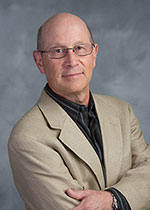
The 47th annual Jansky Lecture will be given by Dr. Mark J. Reid of the Smithsonian Astrophysical Observatory and is titled Measuring the Cosmos. Dr. Reid is being honored for his pioneering work in Very Long Baseline Interferometry (VLBI) as applied to numerous key problems in astrophysics.
The first lecture will take place in Charlottesville on Friday, 2 Nov 2012 at 7:00 p.m. ET in the Gilmer Hall Auditorium at the University of Virginia.
Green Bank will host Dr. Reid on Monday, 5 Nov at 3:30 p.m. ET in the Green Bank Science Center Auditorium.
The final Lecture of the series will be held in Socorro on Friday, 30 Nov at 7:30 p.m. MT at the Workman Center at New Mexico Tech.
More information on Dr. Reid and this year’s Jansky Lecture Series is on-line.
Library News: NRAO Supported Page Charges
Marsha Bishop
The NRAO Library has an online form for publication support requests that is available from the Publications Support page under Submitting Publication Support Requests. This form should save time for the author yet result in as timely a response on publication support as present.
Recent Press Releases
 Surprising Black-Hole Discovery Changes Picture of Globular Star Clusters
Surprising Black-Hole Discovery Changes Picture of Globular Star Clusters
3 Oct 2012
An unexpected discovery by astronomers using the National Science Foundation's Karl G. Jansky Very Large Array (VLA) is forcing scientists to rethink their understanding of the environment in globular star clusters, tight-knit collections containing hundreds of thousands of stars. Read More …
 Astrochemistry Enters a Bold New Era with ALMA
Astrochemistry Enters a Bold New Era with ALMA
20 Sep 2012
Combining the cutting-edge capabilities of the ALMA telescope with newly-developed laboratory techniques, scientists are opening a completely new era for deciphering the chemistry of the Universe. Read More …
Career Opportunities
New Postings
Business Systems Analyst: The NRAO in Charlottesville, VA is accepting applications for a Business Systems Analyst. The incumbent will support observatory-wide operations by leveraging information technology resources to provide insight, analysis and strategy regarding financial position, have proven experience in the field of systems and business analysis and a strong and exceptional working knowledge of Microsoft Excel and Access applications, VBA and ERP systems.
Environment, Safety and Security Manager: The NRAO in Charlottesville, VA is seeking an Environment, Safety and Security Manager. The successful candidate will be responsible for the overall management of all Observatory domestic and international risk functions including Environment, Safety and Security operations; ensure compliance with federal and multi-state health, safety and fire codes and implement measures to reduce or prevent safety hazards, dangers or accidents.
Public Information Officer: The NRAO in Charlottesville, VA invites applications for a Public Information Officer. He/she will be responsible for duties related to media relations, publicity, and, as directed, community relations, principally for the NRAO's newest telescope, the Atacama Large Millimeter/sub millimeter Array (ALMA). The Public Information Officer will be designated point of contact for inquiries and contacts with news media, the general public, community organizations, and other science research institutions with which NRAO may seek to generate joint publicity.
ALMA Control System Java Developer: The NRAO ALMA Computing Division is seeking a Software Engineer II to extend, maintain, and debug the high-level layer of the ALMA Control subsystem, including the data capture component. This software is implemented in Java.
Director – ALMA: The Joint ALMA observatory (JAO) in Santiago, Chile is seeking a Director to provide leadership and scientific abilities in the multinational environment of ALMA. The incumbent will have overall responsibility of leading the observatory and for reporting to the ALMA Board on all aspects of the facility. Specifically the Director is responsible for completing within budget the construction phase of ALMA, ensuring the successful transition to full operations, and subsequently operating the observatory to realize its full scientific potential.
Jansky Fellow: The NRAO is accepting applications for Jansky Fellows. The purpose of the Jansky Fellowship program is to provide an opportunity for young scientists to establish themselves as independent researchers so that they may more effectively compete for permanent positions. The placement of Fellows at institutions other than the NRAO will help foster closer scientific ties between the NRAO and the U.S. astronomical community. Fellows formulate and carry out investigations either independently or in collaboration with others within the wide framework of interests of the Observatory.
NAASC Postdoctoral Fellow: The North American ALMA Science Center (NAASC) located in Charlottesville, Virginia, is offering a Postdoctoral Fellowship. In addition to individual research time, the NAASC Postdoc will develop ALMA expertise and assist the NAASC scientific staff in the support of ALMA users.
Software Engineer II: The NRAO in Socorro, NM is recruiting for a Software Engineer II. Initially he/she will work with other Scientific Support System group members and Open Sky staff to re-insource the Proposal Submission Tool (PST), User Database (UDB), and portal development and maintenance to the NRAO. The Software Engineer will work with our database administrator (DBA) on database issues as well as with our web master on issues like hosting and deploying the PST and portal.
From the Archives
Ellen Bouton

About this month's photo: Ron Bracewell touches up signatures, chiseled in the concrete by visiting astronomers, on the pier of an antenna in the Stanford 5-element array. The array operated 1972–1979; the antennas were demolished in 2006 but the piers with their signatures were left standing. In summer 2012, with funding from Friends of the Bracewell Observatory, 10 piers were transported from Stanford to the Very Large Array site, where they will be arranged as a sundial. The sundial, with its ~150 chiseled-in historic signatures, will be completed in spring 2013.
From the Archives is an ongoing series illustrating NRAO and U.S. radio astronomy history via images selected from our collections of individuals' and institutional papers. If readers have images they believe would be of interest to the Archives, please contact Ellen Bouton, ebouton@nrao.edu.

